New Book by Johnson & Wales U. Educators Offers Teaching Tools and Tips
Tuesday, 01 April 2014 03:00
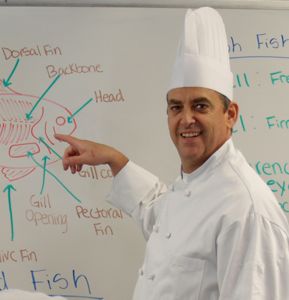 Due to release June 1, Culinary Educators’ Teaching Tools & Tips written by Colin P. Roche, Bradley J. Ware and Claudette Lévesque Ware is the first text of its kind.
Due to release June 1, Culinary Educators’ Teaching Tools & Tips written by Colin P. Roche, Bradley J. Ware and Claudette Lévesque Ware is the first text of its kind.
By Brent T. Frei
At this year’s CAFÉ Deans and Directors Retreat in Chicago in February, Dr. Colin Roche, CEC, CCE, FMP, CHE, ACE, announced the pending release of a new book, Culinary Educators’ Teaching Tools & Tips (ISBN: 978-1-4652-4398-0, $45.00). An associate professor and the department chair for the College of Culinary Arts at Johnson & Wales University in North Miami, Fla., Roche co-wrote the book with Dr. Bradley J. Ware, CCC, CCE, a professor in the College of Culinary Arts at JWU in Providence, R.I., and Dr. Claudette Lévesque Ware, a professor in the John Hazen White School of Arts and Sciences at JWU in Providence.
Culinary Educators’ Teaching Tools & Tipswas written to serve as a valuable source of information for secondary and postsecondary culinary and hospitality educators, filled with specific, concrete and achievable lab and classroom teaching techniques.
“The Gold Medal Classroom” caught up with Roche to ask a few questions related to the crafting of this book.
GMC:Why did you see a need to write a book on this topic?
Roche:“The impetus for the book came when I realized that most culinary/hospitality instructors get hired because they are content experts—which is why they should get hired. However, they usually have very little experience, if any, in teaching. Unfortunately, they often receive little to no training when they start, outside of maybe a quick orientation. The new instructor is put into the classroom unprepared, without any formal training and forced to figure it out on his or her own. This is how I started, and looking back, I am sure that I wasn’t very effective in the classroom in those early years.

 New survey reveals the focus of today’s culinary education
New survey reveals the focus of today’s culinary education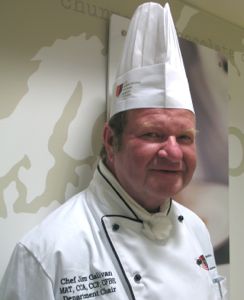 A veteran culinary educator recalls mingling among “the beautiful people” at the last annual TomatoFest.
A veteran culinary educator recalls mingling among “the beautiful people” at the last annual TomatoFest. Following up on last month’s inspiration to teach curiosity by capitalizing on the five “W”s, this month Dr. Mayo reveals three additional strategies.
Following up on last month’s inspiration to teach curiosity by capitalizing on the five “W”s, this month Dr. Mayo reveals three additional strategies.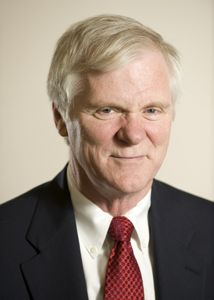 Cal Poly Pomona Hospitality Management professor Dr. John Self has been selected to be a Fulbright Scholar at Haaga-Helia University of Applied Sciences in Helsinki, Finland. He will teach abroad from August through November.
Cal Poly Pomona Hospitality Management professor Dr. John Self has been selected to be a Fulbright Scholar at Haaga-Helia University of Applied Sciences in Helsinki, Finland. He will teach abroad from August through November.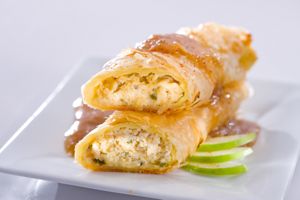 Emmi Roth USA, an award-winning producer of specialty cheeses, has announced the winner of its Grand Cru® Recipe Contest for Postsecondary Culinary Students. Caroline Ausman of Burlington, Wis., took top honors with her recipe for Manicotti en Croûte with Brandied Fig Sauce.
Emmi Roth USA, an award-winning producer of specialty cheeses, has announced the winner of its Grand Cru® Recipe Contest for Postsecondary Culinary Students. Caroline Ausman of Burlington, Wis., took top honors with her recipe for Manicotti en Croûte with Brandied Fig Sauce.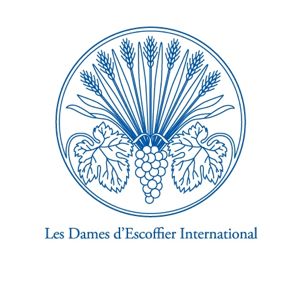 Imagine working side by side with a top caterer in Seattle, helping with the grape harvest for the oldest continuously operating, family-owned winery in California, or experiencing farm-to-table initiatives on a farm in Hawaii. These opportunities and others are available to women working in the food, beverage and hospitality industries through the 2014 Les Dames d’Escoffier International (LDEI) Legacy Awards.
Imagine working side by side with a top caterer in Seattle, helping with the grape harvest for the oldest continuously operating, family-owned winery in California, or experiencing farm-to-table initiatives on a farm in Hawaii. These opportunities and others are available to women working in the food, beverage and hospitality industries through the 2014 Les Dames d’Escoffier International (LDEI) Legacy Awards. 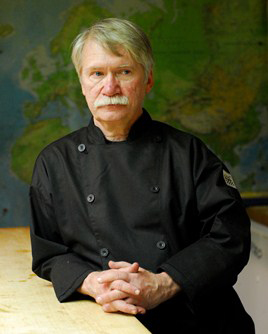 As educators, we cannot not ignore what consumers of education seek. So why do many in education assume that teaching and training are mutually exclusive?
As educators, we cannot not ignore what consumers of education seek. So why do many in education assume that teaching and training are mutually exclusive?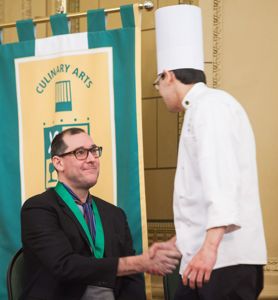 Mark Ladner, executive chef of Del Posto in New York, tells CIA grads to always be students and remain curious.
Mark Ladner, executive chef of Del Posto in New York, tells CIA grads to always be students and remain curious.